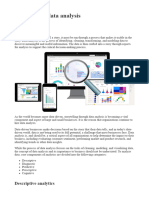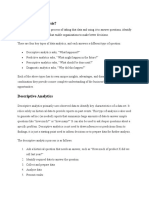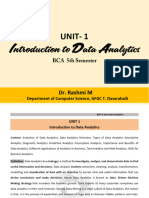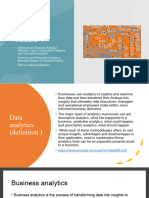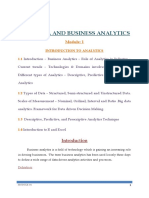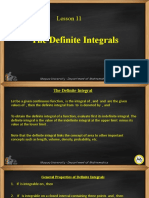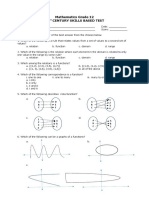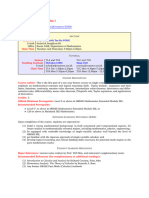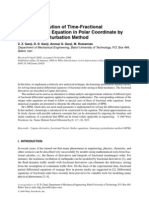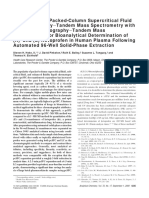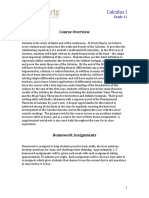0% found this document useful (0 votes)
63 views8 pagesUnit 12 Data Analytics Ass 01 - Report
The document outlines the fundamentals of data analytics, including its definition, methods, activities, techniques, and tools. It emphasizes the importance of descriptive analytics in decision-making and how it helps organizations understand performance trends and make informed strategic choices. Additionally, it highlights the role of data analytics in enhancing competitiveness and mitigating risks in business operations.
Uploaded by
pubudu chandimaCopyright
© © All Rights Reserved
We take content rights seriously. If you suspect this is your content, claim it here.
Available Formats
Download as DOCX, PDF, TXT or read online on Scribd
0% found this document useful (0 votes)
63 views8 pagesUnit 12 Data Analytics Ass 01 - Report
The document outlines the fundamentals of data analytics, including its definition, methods, activities, techniques, and tools. It emphasizes the importance of descriptive analytics in decision-making and how it helps organizations understand performance trends and make informed strategic choices. Additionally, it highlights the role of data analytics in enhancing competitiveness and mitigating risks in business operations.
Uploaded by
pubudu chandimaCopyright
© © All Rights Reserved
We take content rights seriously. If you suspect this is your content, claim it here.
Available Formats
Download as DOCX, PDF, TXT or read online on Scribd
/ 8






